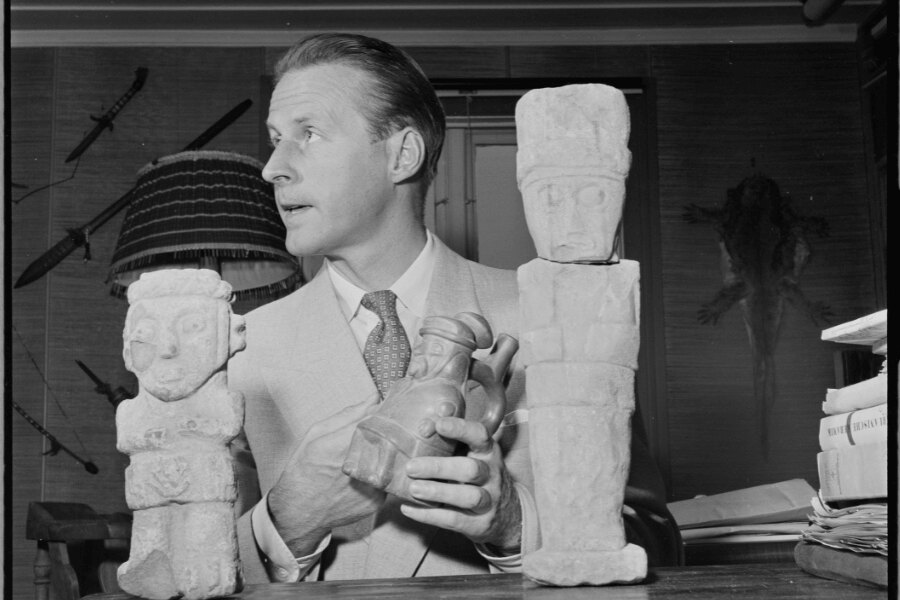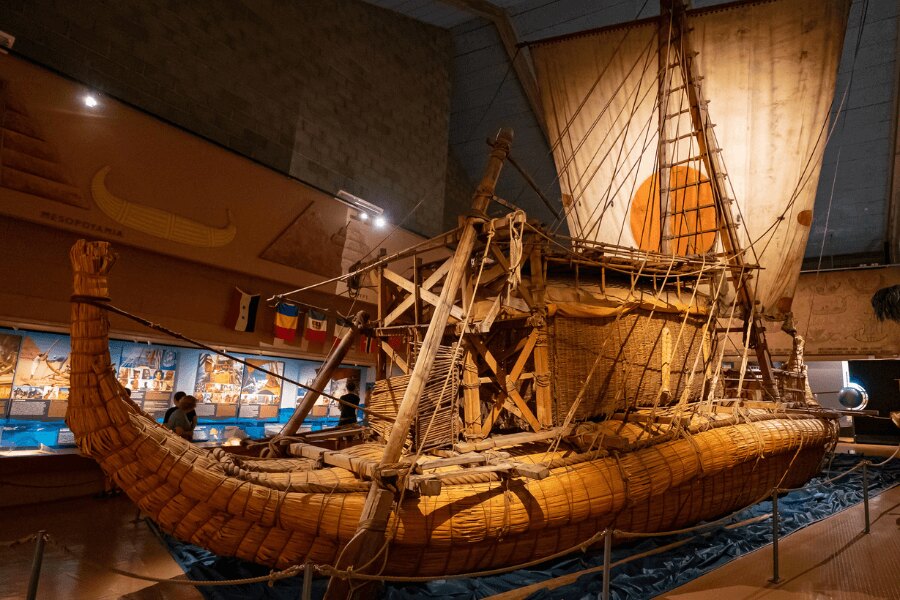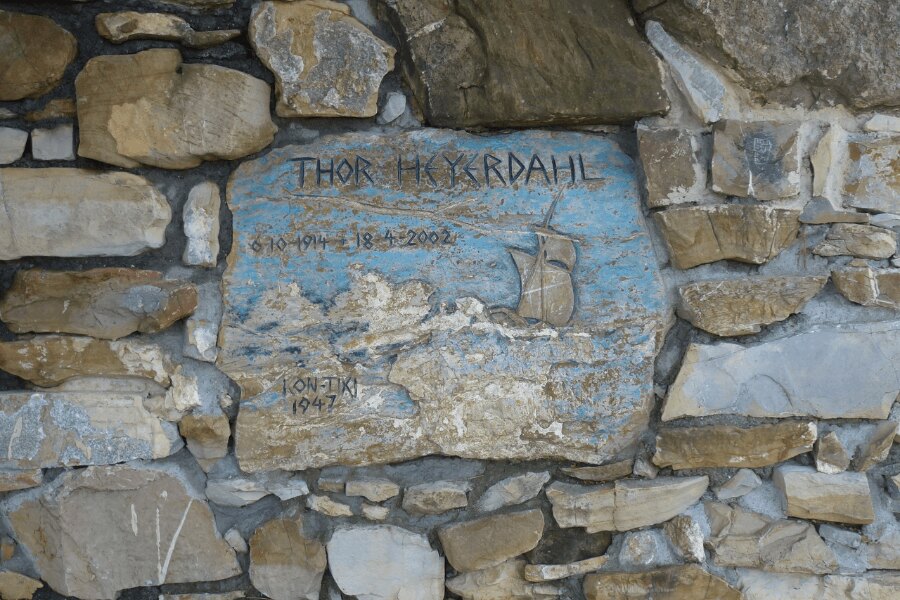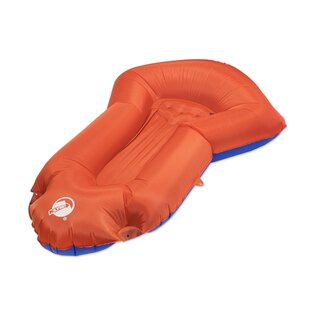Adventurous Expeditions of Thor Heyerdahl
The unique Norwegian adventurer, Thor Heyerdahl, participated in a number of expeditions that he led himself. Some of them were successful, others unfortunately could not be brought to a satisfactory end. Today we have prepared an article for you about his successful as well as unsuccessful journeys, which you can also read about in his book. Alternatively, you can visit the museum in Oslo dedicated to this giant during your vacation.
A unique young man
From a young age, Thor Heyerdahl was dedicated to zoology, even creating a small museum dedicated to the European viper. Later, he decided to study zoology and geography at the University of Oslo and privately devoted himself to studying Polynesian culture and history. During his studies, he became enthusiastic about an unusual project where young Thor was to visit some isolated groups of islands in the Pacific and study how local animals got there.

Thor Heyerdahl was a Norwegian adventurer who dedicated his life to researching the migration of indigenous tribes between continents
Fatu Hiva
In 1936, Thor, with his first wife Liv, set off on a journey to the island of Fatu Hiva, which lies in the southern Pacific. It must be said that the adventurers somewhat underestimated their arrival on the island and eventually had to purchase necessary supplies in Tahiti. They arrived at Fatu Hiva in 1937. First and foremost, they decided to cross the mountains in the inland area and then settled in a small valley on the eastern side of the island.
The couple lived in a small house that provided them with sufficient protection. They successfully farmed on a small field while diligently working on their academic goals. These consisted of collecting and studying various island specimens. The island of Fatu Hiva inspired Thor with an interesting idea. Surrounded by the old glory of the once-powerful Marquesan civilization, Thor could not shake the feeling that on this or similar islands, contact with South American cultures might have occurred.
The Kon-Tiki Expedition
Thor's theory was subjected to strict criticism from the start, and Thor himself had to work hard to defend his bold opinion. How could natives from South America sail to Polynesia when they had no boats or rafts? The adventurer's answer was simple: they had balsa wood rafts. Thor was mockingly told that if he was so smart, he should try such a journey himself. To everyone's astonishment, Thor accepted the challenge without hesitation.
For such a large and dangerous expedition as the Kon-Tiki expedition, it was necessary to raise a sufficient amount of money. Thor was very fortunate, as his father and some good friends in America supported him, so nothing stood in the way of the expedition's departure. In 1947, after long preparations, Thor set off with five men on an extraordinary adventure on a raft built according to original drawings by Spanish conquerors.
The beginning of the journey was relatively comfortable; the raft was towed by a Peruvian Navy ship. The real adventure began when the adventurers reached the open sea and the raft started to be carried by the Humboldt Current. After 101 days of sailing and almost 7,000 kilometers covered, the adventurers were shipwrecked near the island of Raroia in the Tuamotu Archipelago. After waiting several days, they were rescued by the inhabitants of a neighboring island and then transported by a French ship to Tahiti.
All the endeavors of the group of adventurers are captured in the book Kon-Tiki, which has been translated into more than 70 languages, with the Czech translation being published in 1957. The book became an immediate bestseller, selling an incredible 50,000,000 copies. The documentary film about the expedition was also recognized, winning an Oscar for best documentary in 1951.

The legendary Kon-Tiki raft, on which Thor Heyerdahl and his crew traveled almost 7,000 km.
For the majestic moai
The success of the Kon-Tiki expedition motivated Thor for another adventure, so between 1955 and 1956, he participated in an archaeological expedition to Easter Island. Heyerdahl stayed on Easter Island for several months, studying several significant archaeological sites. Besides excavations, he also engaged in carving, transporting, and erecting magnificent moai. Heyerdahl's findings are summarized in the popular book Aku-Aku, which also became an international bestseller.
The (Un)successful Ra Expedition
Research on Easter Island naturally could not satisfy the adventurer's longing for a voyage on the open sea. For this reason, in 1969, he embarked on another bold attempt to cross the Atlantic Ocean in a papyrus boat named after the sun god Ra. Unfortunately, the voyage was unsuccessful because, after a few weeks, water began to seep into the boat. The Ra boat was soon afterwards destroyed in a storm, and the crew was rescued by a yacht near islands in the Caribbean Sea. Before sinking, the adventurers covered an impressive 6,400 kilometers on the boat.
The failure didn't deter Thor, so in 1970, he was ready to set sail on the high seas with a modified vessel Ra II. The sailors successfully sailed from Morocco to Barbados, covering more than 6,000 kilometers on their journey. A book The Ra Expeditions was written about the voyages, and a documentary film Ra (1972) was made.

The memorial stone of Thor Heyerdahl near Colla Micheri, where he died on April 18, 2002.
Unfortunate Tigris
Thor's last nautical venture was to prove that the inhabitants of Mesopotamia could sail to India. The reed boat Tigris set off on a journey in 1977 through the Persian Gulf but unfortunately never reached its destination. The daring expedition was interrupted by war, forcing the adventurers to return to Europe.
Thor's theories, despite the grand successes of his expeditions, could not be proven, and after thorough analyses of remains, these theories were completely refuted. Despite most of his work not being understood by the scientific community, no one can deny Heyerdahl for raising public interest in ancient history and anthropology.
Through his exploits, he proved that nothing is impossible. If you would like to learn more about Thor's life, we recommend visiting the Kon-Tiki Museum on the Bygdøy Peninsula in Oslo, Norway, where the vessels and maps from the Kon-Tiki expedition are stored alongside a large library.
Readers are further interested




































































































































